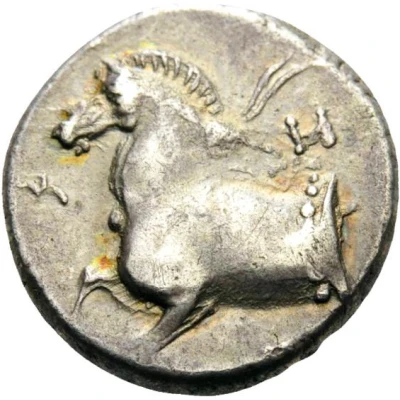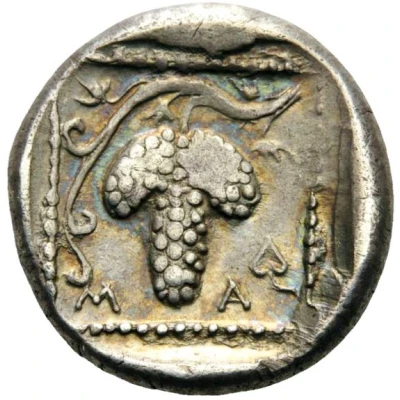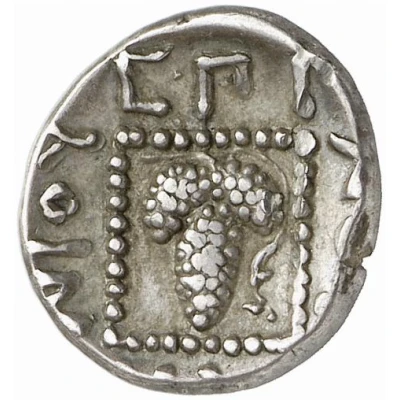


© Classical Numismatic Group, Inc.
Triobol - Molpoos 398 BC - 385 BC
| Silver | 2.72 g | - |
| Issuer | Maroneia (Thrace) |
|---|---|
| Type | Standard circulation coin |
| Years | 398 BC - 385 BC |
| Value | Triobol (½) |
| Currency | Drachm |
| Composition | Silver |
| Weight | 2.72 g |
| Shape | Round (irregular) |
| Technique | Hammered, Incuse |
| Orientation | Medal alignment ↑↑ |
| Demonetized | Yes |
| Updated | 2024-10-10 |
| Numista | N#430389 |
|---|---|
| Rarity index | 100% |
Reverse
Grape-bunch on vine; EΠI to lower right; all within dotted linear square in shallow incuse square.
Script: Greek
Lettering: ΜΑ EΠI
Interesting fact
The Triobol - Molpoos coin was used as a form of currency in the ancient Greek city of Maroneia, located in Thrace, and was minted during the reign of King Molpoos (398-385 BC). The coin features an image of the king on one side and a youthful Dionysus on the other, symbolizing the city's strong cultural and religious ties to the Greek world. Despite its small size, weighing only 2.72 grams, the coin played a significant role in the local economy and trade, demonstrating the city's prosperity and economic importance during that time.



